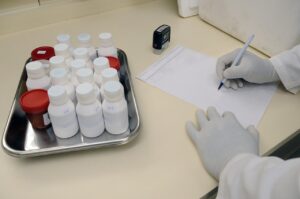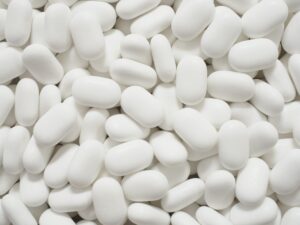Glycogen Storage Disease Type 1a (GSD1a)
What is glycogen storage disease type 1a?
Glycogen storage disease type 1a (GSD1a) falls under the larger category of glycogen storage diseases (GSDs). It is characterized by the accumulation of glycogen throughout the body, especially in the liver and kidneys.
What are the symptoms of glycogen storage disease type 1a?
While some affected individuals see the onset of symptoms right after birth, it most commonly occurs in the third or fourth month of life. Symptoms include:
- Short stature
- Hypoglycemia
- Lactic acidosis
- Hypoglycemic seizures
- Hepatomegaly
- Hyperlipidemia
- Hyperuricemia
- Xanthoma
- Diarrhea
- Thin appendages
- Doll-like faces, fat cheeks
- Impaired platelet function
- Enlarged kidney and/or liver
Other possible effects of GSD1a include osteoporosis, gout, adenomas in the liver, pulmonary hypertension, kidney disease, and polycystic ovaries.
What causes glycogen storage disease type 1a?
A mutated G6PC gene, which is inherited in an autosomal recessive pattern, is responsible for this condition. This mutation results in a lack of activity from the enzyme glucose-6-phosphatase (G6Pase), which is needed to break glycogen down. When there is too little of G6Pase, glycogen accumulates and causes the characteristic symptoms.
How is glycogen storage disease type 1a diagnosed?
Doctors use tests that measure levels of glucose, lactate, triglycerides, cholesterol, and uric acid to diagnose this condition. They will utilize genetic testing to confirm a diagnosis.
What are the treatments for glycogen storage disease type 1a?
Very careful monitoring of one’s diet is the major part of treatment. Affected individuals should avoid sucrose, fructose, galactose, and lactose, and they should eat around the clock. Ideally, GSD1b patients are eating every one to three hours to maintain their blood sugar. For young children, this often means a feeding tube.
To give more time between meals, doctors recommend drinking a mix of cornstarch and either water, soy milk, or formula. This mixture releases its sugars slowly. Because this diet is so low in nutrients and vitamins, patients have to take supplements.
Where can I find out more about glycogen storage disease type 1a?
Glycogen Storage Disease Type 1a Articles

Running for a Cure 2023: A Fundraiser for GSD1B From the Sophie’s Hope Foundation


Running for a Cure: A Fundraiser for GSD1B From the Sophie’s Hope Foundation

A UConn Health Team Administers the World’s First Gene Therapy for Glycogen Storage Disease Type-1a

A Glycogen Storage Disease Patient Story: Fighting for Answers and Finding Community

Experimental Treatment for Glycogen Storage Disease Type III Gets Orphan Designation in EU and US








